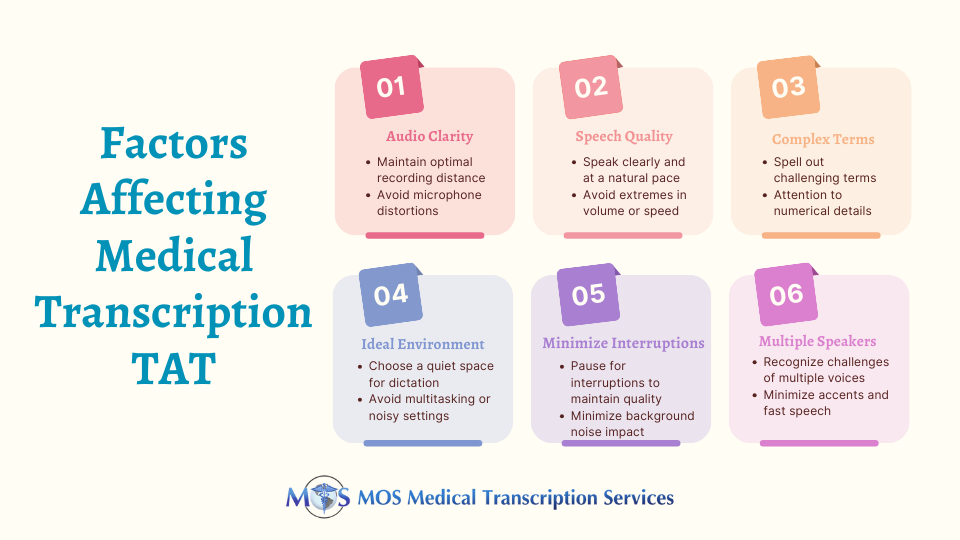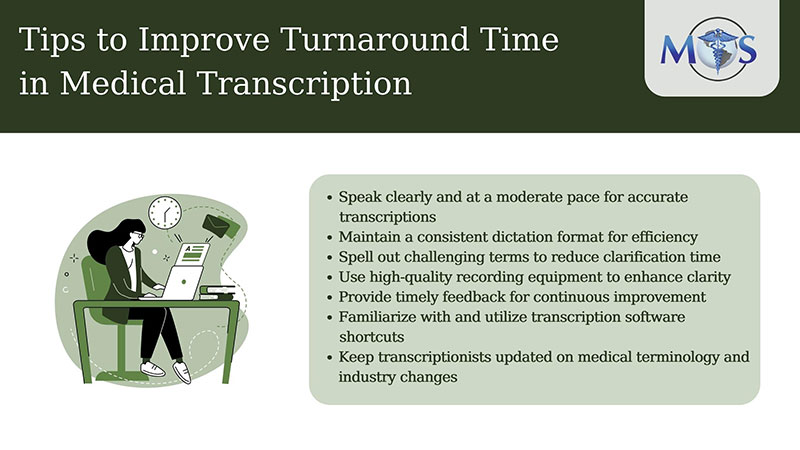
Since the introduction of EHRs, healthcare providers are having a hard time juggling EHR documentation and patient care, and this has led to physician’s burnout. Outsourced medical transcription services are a practical solution to this problem. It helps generate accurate medical records, promotes quality patient care, ensures proper reimbursement, and maximizes overall practice efficiency.
Voice Recognition Software Vs Medical Transcription Services
Some healthcare professionals use voice recognition software or artificial intelligence based software for medical documentation whereas some rely on medical transcription services. During the consultation, physicians have to type everything on the EHR system. The average physician’s typing speed is only 30 words per minute which is why they choose to dictate their notes.
Physicians can speak into a recording device, which then sends the information to speech recognition software. The software converts the physician’s dictation into written text, which may subsequently be modified and reviewed. There is a technical distinction between voice recognition and speech recognition: voice recognition recognizes the person speaking, whereas speech recognition recognizes the words spoken. The advantages of voice recognition software are:
- Simple physiological disorders, such as heartburn, can be easily documented using basic question lists or algorithms in EHR, but more complicated conditions frequently include psychosocial symptoms that are just as essential. In such cases, being able to communicate directly with patients about their experiences generates more detailed data and problem lists.
- Voice recognition software allows clinicians to think aloud, which can results in unique insights that might otherwise go unnoticed if data was entered manually. It all boils down to time for many providers. Instead of thinking in terms of manual data entry, they can allow their natural thought process dictate the notes, which is typically faster.
- When the patient can hear what the physician is writing in the record, they are more likely to believe that he or she is paying attention to them and that they are receiving better treatment. Patient satisfaction has an impact on treatment adherence. Patients are more inclined to disclose critical information that can enhance their outcomes if they believe what they’re saying is more thoroughly captured in their records.
Another method of converting physician’s dictation into medical records is with the help of medical transcription services. Apart from patient care, healthcare providers have several other responsibilities to accomplish. As a result, boosting overall efficiency is critical to a healthcare organization’s performance. However, this is sometimes difficult to achieve, given how much work needs to be done every day. Using a medical transcription service provider not only ensures a dependable and accurate method to streamline medical documentation, but also frees up staff time to focus on other critical needs or activities throughout the day. Imagine how much better patient care would be if a physician didn’t have to spend numerous hours each day transcribing notes. It allows doctors to record patient data at their leisure, which may then be transmitted to a service that will transcribe it while the physician spends time with the patient. Instead of staring at a computer screen documenting the appointment, the physicians can look at the patient and talk to them without any interference.
The Key Advantages of Medical Transcription Services
- The physician must evaluate the documentation created by speech recognition software. It is easy to let mistakes slip through the gaps when editing one’s own work, but physicians can’t afford to provide medical records with even a few typos. When it comes to proofing essential documents, nothing matches the human touch which a medical transcription company can provide. Improved accuracy reduces the likelihood of malpractice litigation and enhances audit protection, both of which can provide greater peace of mind to practitioners.
- Achieving interoperability is one of the most important goals in healthcare. It refers to the secure integration of and access to electronic health data so it can be used to optimize health outcomes. Due to the extensive manual setup involved, speech recognition software usually has limited ability to connect with EHRs. Medical transcription companies, on the other hand, are well-known for their ability to work with a variety of EHRs. The most reliable transcription services integrate directly with EHRs, populating charts with the necessary data as soon as the transcription is finished. Completed transcripts will be transferred to your practice’s EHR in a seamless and HIPAA-compliant manner, reducing stress and saving time.
- The Health Insurance Portability and Accountability Act (HIPAA) is well-known among physicians and medical professionals, but with so many voice recognition software possibilities, not everyone recognizes that these programs aren’t necessarily HIPAA-compliant. Recognizing the critical necessity of data security, reputable medical transcription vendors require all workers to complete extensive training on HIPAA and security best practices.
Voice recognition may seem like an easy process at a first look, but it can lead to errors in medical records which will affect patient care, and can even prove fatal. The John Hopkins University School of Medicine notes that one-third of all deaths throughout the country in the United States are caused by a medical error. Medical errors such as incorrect drug prescriptions and diagnoses, are much more likely to occur with voice recognition software.
Where Does Technology Fail?
The lack of contextual awareness is the most obvious difficulty with voice recognition and AI-powered apps. They can only hear and transcribe words one at a time, with no context to influence which term they choose to write. As a result, uncommon, lengthy vocabulary may be misidentified and transcribed incorrectly. Human medical transcriptionists, on the other hand, have a broad awareness of anatomy, medications, diseases, and testing, as well as a fundamental command of the English language, which guides their sentence structure and word selections. As a result, the EHR documentation they help create is accurate and understandable. Medical transcriptionists can also fix error in AI-generated text.
A Blended Approach: Medical Transcription and EHR
A combined strategy that includes both medical transcription and structured EHR templates could help to overcome all of these issues. Physicians can dictate patient information into a recording device and these audio recordings are encrypted and transferred to an outsourcing company offering medical transcription services. Such companies have experienced transcriptionists who will convert them into accurate text that can be integrated into the EHR. The key benefit of this hybrid method is that it will help practices meet the government’s EHR mandate while ensuring accurate clinical documentation. It will also allow physicians to spend more time with their patients and focus on providing better care.










